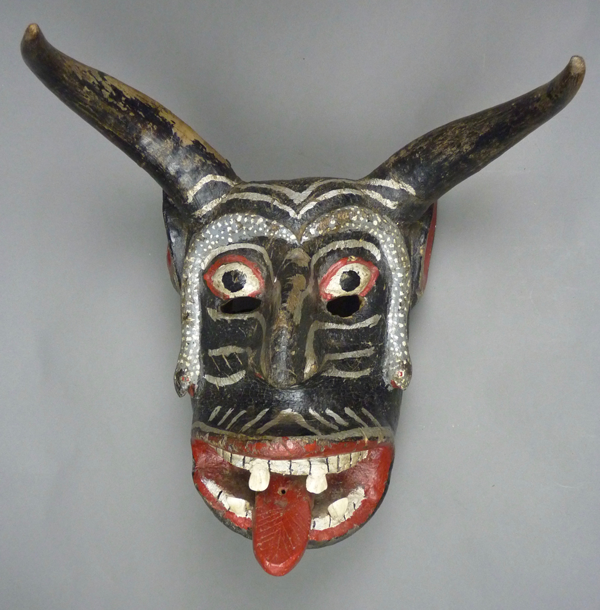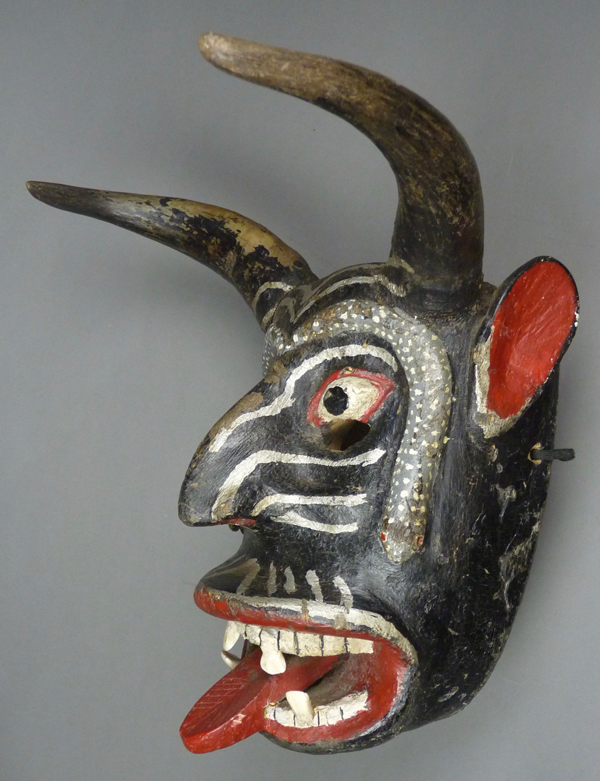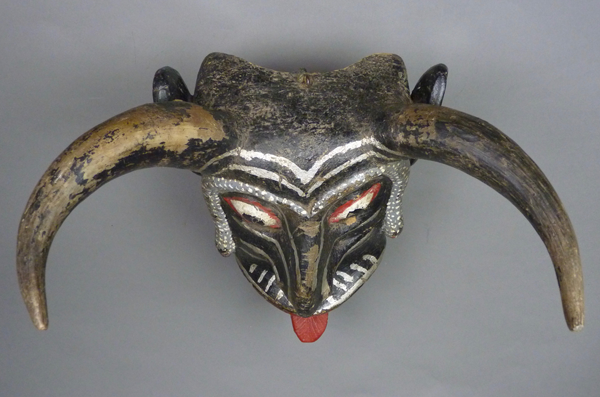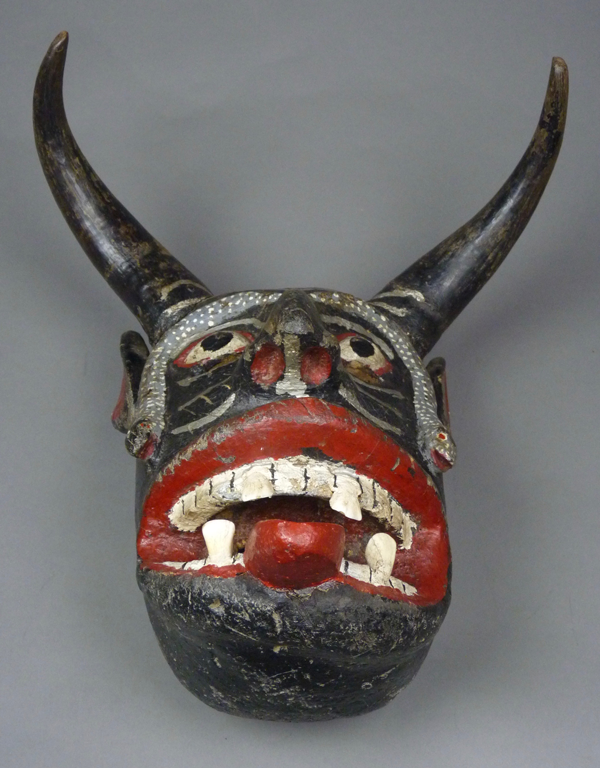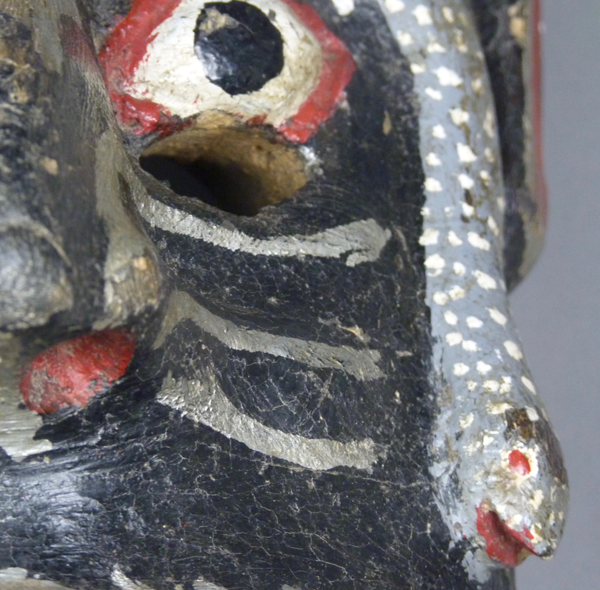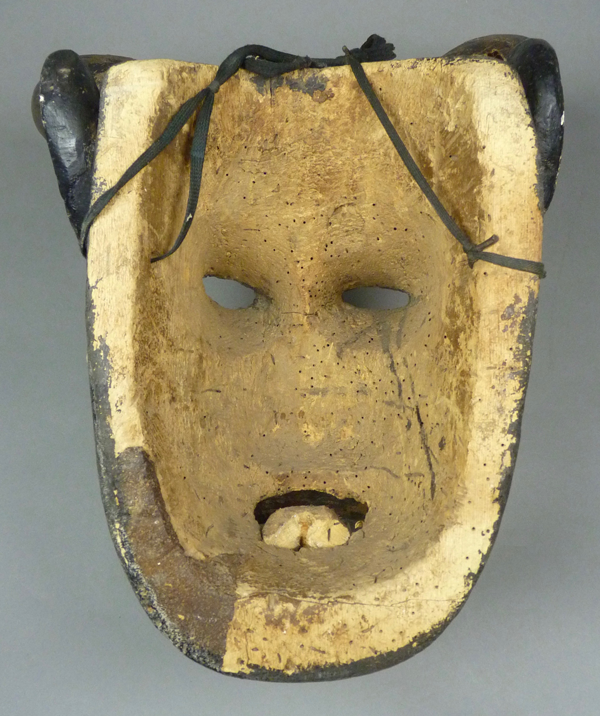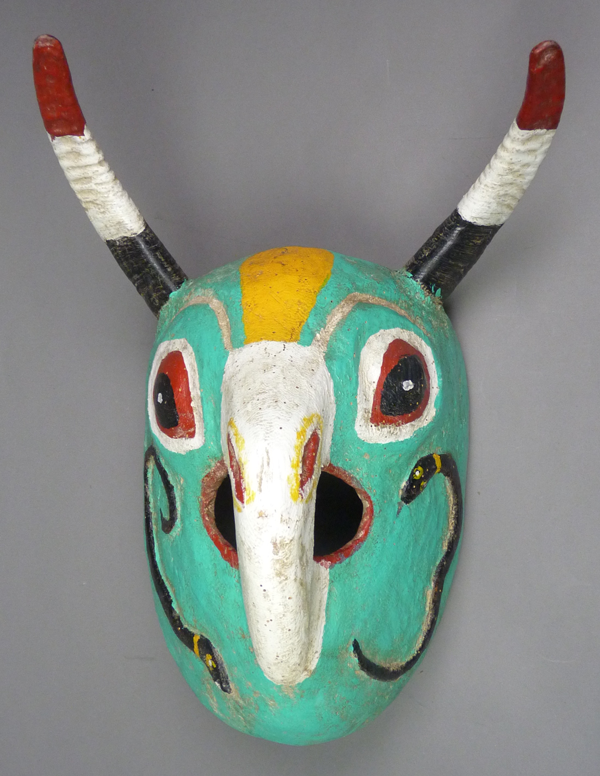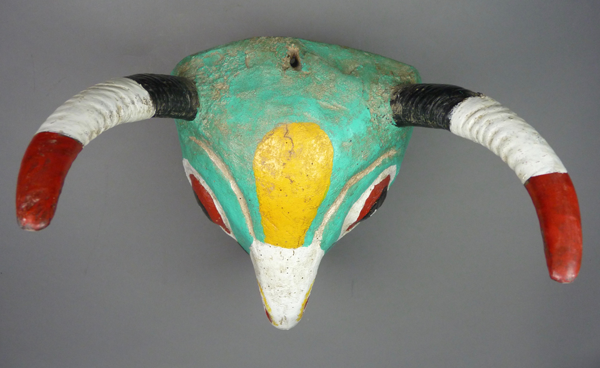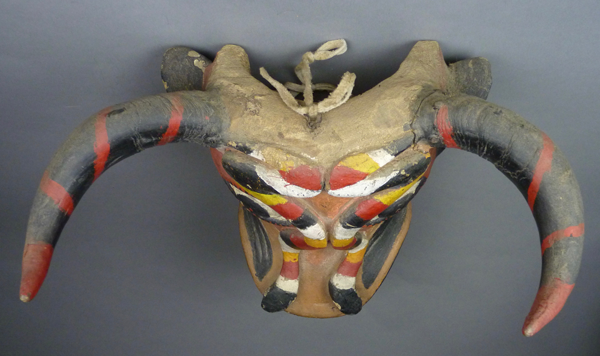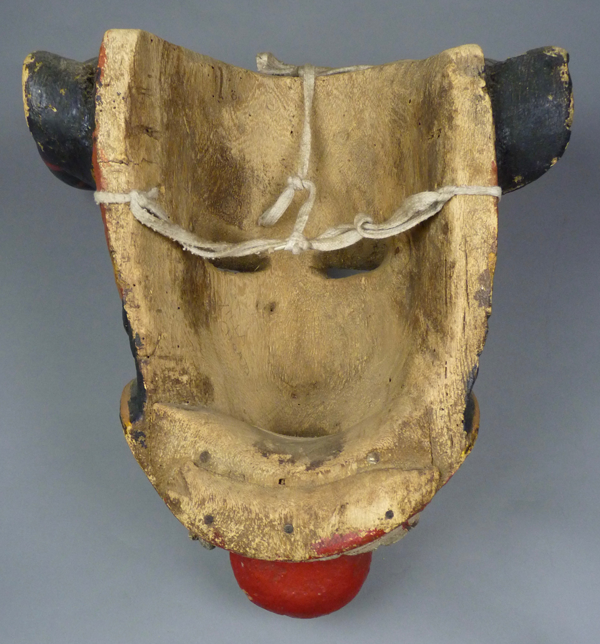Today we will examine three large masks that were either found in Guanajuato or they were attributed to that state. As you will see, some could actually be from Michoacán.
The first of these was collected in Guanajuato by Jaled Muyaes and Estela Ogazón, and I purchased this mask from them in July, 2001. However I now see that it looks very similar in style and design details to the pair of masks by Emiliano Fernández, of Angahuan, Michoacán that we saw in my post of August 7, 2017.
For example, it has the same style of eyes, ears, spotted green open-mouthed snakes, mouth, and back design.
This is a handsome mask.
There is no sign of damage or repairs.
There are carved teeth plus attached animal teeth.
Here is a closer view of the Emiliano style snake. This mask is 12½ inches tall, 9 inches wide, and 6½ inches deep, excluding the horns. With the horns it is 14 inches tall and 12 inches wide.
This mask was carved from wood that had previously been infested with wood boring insects. There is a repair, with wood filler, on the left lower corner of the back.
I purchased the Second mask from René Bustamante in October, 1995. René believed that the mask was originally carved in El Limón, Guanajuato. I discovered two places in Guanajuato named El Limón, but both are very small and remote Mestizo villages, and I could find no evidence on the web of masked dances in either place. This mask is a near duplicate of a mask in the collection of Jaled Muyaes and Estela Ogazón that can be seen in the Máscaras book by Estela Ogazón (plate 37). They had collected that mask in Certenejas, Guanajuato, a village that I have been unable to even locate.
This is a parrot faced diablo. The Ogazón mask has a snake crawling down the center of the parrott’s beak, while this one has a pair of snakes on the cheeks.
As with the Ogazón mask, the dancer looks through vision slits that flank the beak.
I particularly like the placement of the snakes, one pointed up and the other down.
This mask is 10 inches tall, 8 inches wide, and 6 inches deep, not including the horns. With the horns it is 13 inches tall, and the span between the tips of the horns is 9 inches.
The back of this mask has excellent patina from use.
I purchased another large Diablo mask from René Bustamante that he had attributed to El Limón, Guanajuato. Someone had written on the back, in pencil, the name of the place where this mask was collected, an old colonial town in Michoacán—Villachuato. Evidently the mask had migrated there from a more rural setting, such as El Limón. However a closer source might have been Puruándiro, Michoacán, about 10 miles down the road from Villachuato, while El Limón is 100 miles north of Villachuato.
From a superficial comparison, one might wonder if this was yet another diablo by Emiliano, but actually there are many differences, such as the shaping of the vision slits, the tilt of the ears, and the crease down the center of the tongue, not to mention the painting of the snakes.
This mask is painted elegantly.
There is no sign of damage.
This mask is 14 inches tall, 12 inches wide, and 6 inches deep, not including the horns. The horns do not make it taller, but the span between their tips is 13 inches.
It appears that the lower back of this mask has been extended in layers, perhaps because the carver discovered that that part needed to be thicker.
Next week we will examine four more of these larger Diablo masks from Guanajuato.

